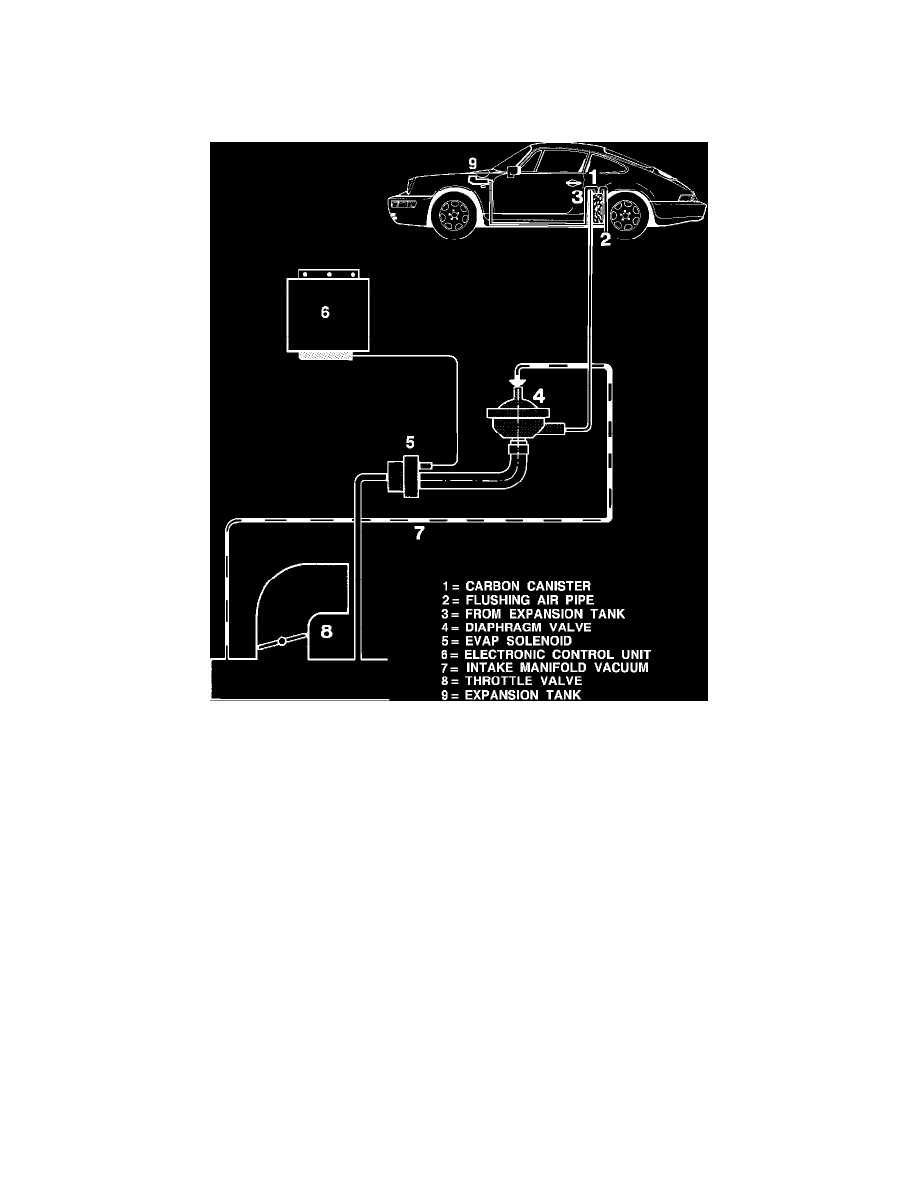911 Turbo F6-3299cc 3.3L SOHC Turbo (1992)

Evaporative Emissions System: Description and Operation
PURPOSE
The evaporative control system prevents gasoline vapors from escaping into the atmosphere. Vapors from the fuel tank are routed to the evaporative
control canister. Carbon in the canister stores the gasoline vapors until the engine is started. The intake manifold vacuum of the running engine draws
the vapors trough the diaphragm and EVAP solenoid valve into the combustion chamber, where the vapors are burned.
Fig. 33 Evaporative Control System
CONSTRUCTION
The evaporative control system consists of an expansion tank, carbon canister, diaphragm valve, EVAP valve, connecting hoses and the fuel filler cap.
When the engine is at idle, the diaphragm and EVAP solenoid valves are closed. Fuel vapors are absorbed by the carbon in the canister. When the
engine is running at normal or high load conditions, the vacuum in the intake manifold will open the diaphragm valve. This enables the vapors to flow
through it. When the engine has reached operating temperature and is above idle, the EVAP solenoid valve will open and close in cycles depending on
air flow measured by the air flow sensor. A high air flow will keep the valve open for a longer amount of time than a low air flow. The gasoline vapors
can now be drawn out of the carbon canister, through the open diaphragm and EVAP solenoid valve into the intake manifold. There they get burned in
the combustion chamber.
COMPONENTS:
EXPANSION TANK
The expansion tank is used as a fuel overflow canister. When the fuel tank is full and the outside temperature changes from cold to hot (or other
influencing factors), the fuel expands into the expansion tank. As the fuel level drops, the fuel flows back into the tank via a hose connection.
CARBON CANISTER
The canister contains carbon (activated charcoal) which absorbs the gasoline vapors from the fuel tank. The suction created by the intake air system
draws the fuel vapors from the carbon out of the canister. The use of alcohol-gasoline fuels will reduce the effectiveness of the carbon in the canister.
DIAPHRAGM VALVE
This valve is controlled by a vacuum line connected to the throttle housing. When no vacuum is applied to the valve, the vapor hose connections are
blocked off. With vacuum at the diaphragm valve, the connection is opened.
